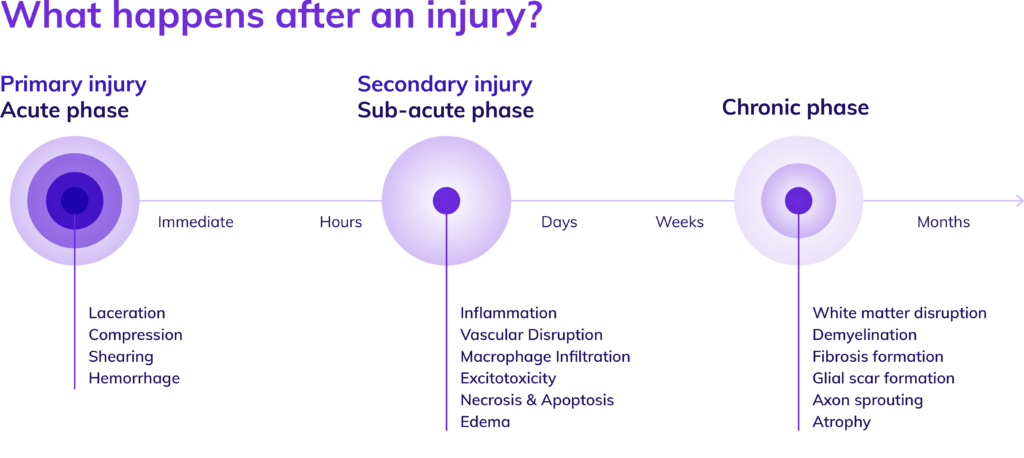Understanding the Injury
Every spinal injury is unique.
There are however two key stages in the body’s response to a traumatic injury to the spinal cord. Generally, these can be broken down into primary and secondary stage injuries:
Primary
The primary stage of the injury occurs immediately after the event and describes the consequences of the initial impact of the injury. Depending upon the circumstances, haemorrhaging, laceration and compression of the bones of the spine can be seen at the site of injury.
Secondary
Minutes after the injury, the body rushes to protect and repair the damaged area. The immune system sends special cells to the injured site, which cause inflammation and swelling. This natural response is like a first aid kit for the body, attempting to contain the damage. However, this swelling can also increase pressure on the spinal cord, potentially making the injury more severe.

As the initial injury settles, further changes occur within the spinal cord. These changes include:
- Scar Formation: Over time, damaged nerve cells (neurons) may die, and the body may begin to form scar tissue at the site of the injury. This scar tissue, also known as a glial scar, can inhibit the regeneration of nerve fibers.
- Neuroinflammation: Inflammatory responses in the spinal cord can persist and contribute to ongoing tissue damage and neuroinflammation. Immune cells continue to play a role in this stage.
- Nerve damage: In the segments of the spinal cord both above and below the injury site, nerve fibers may undergo further degeneration as the nerve cells break down.

Complete and incomplete injuries
Unless there is a complete laceration of the spinal cord at the site of the injury, most injuries will still have some connected nerve fibres across the injury site. These injuries are said to be incomplete in nature, and a number of research treatments look to use this “spared” spinal circuitry to regain lost functions.